The Great Salt Lake is drying out – meet the scientist writing its obituary
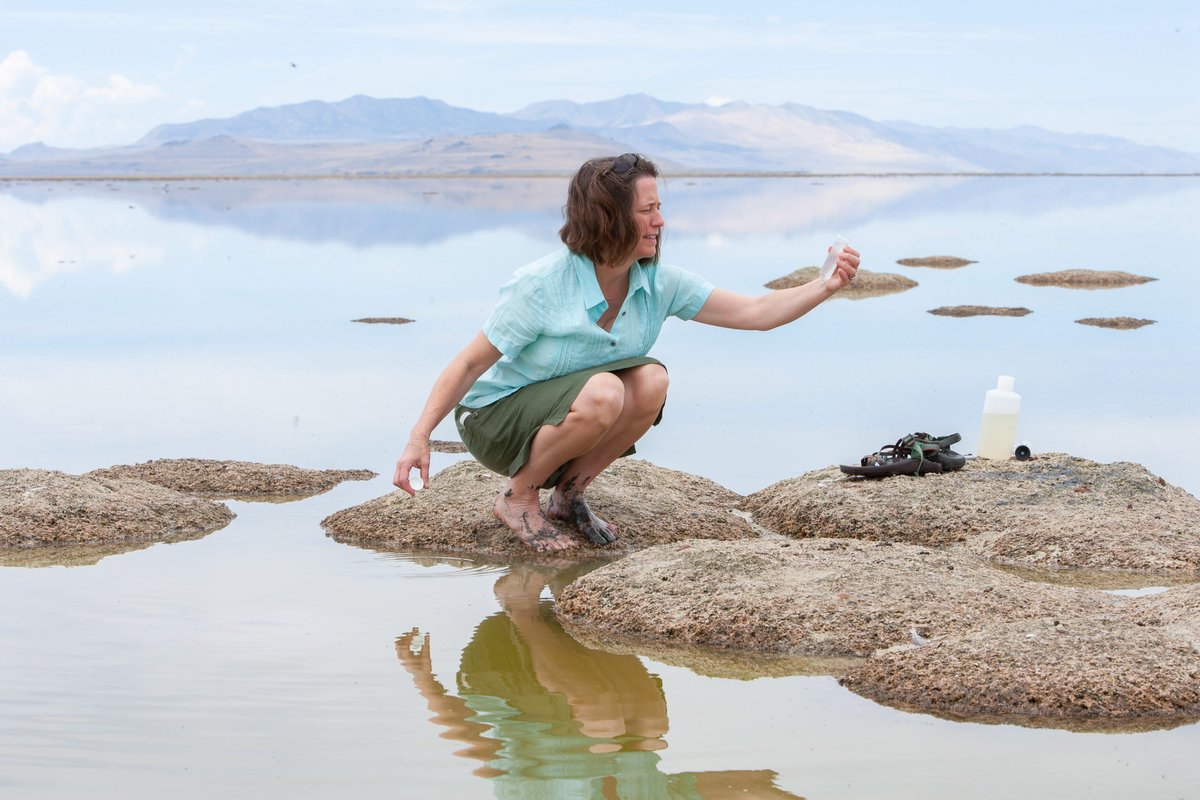
Some things are so precious, so essential for the common good, they cannot be bought or sold. They fall, instead, to the public trust, a doctrine of common law that dates to the Roman empire.
Great Salt Lake is one. The world’s eighth largest saline lake is the cornerstone of Utah’s outdoorsy lifestyle, supports 7,700 jobs and $1bn in annual economic output. Millions of migratory birds flock to its shores, earning it a reputation as “America’s Serengeti”.
And, it is dying.
The lake’s water levels hit a record low in November 2022. Despite a record snowfall that winter, its footprint remains one-third what it was a few decades ago. That’s 11ft lower than when the lake was first measured in the mid-1800s.
Without dramatic intervention, the lake will disappear in five years, according to 2023 research from Brigham Young University.
The Great Salt Lake crisis embodies Utah’s struggle between a pro-growth mindset, long embedded in the American West, and the need to protect a critical natural resource.
Threats to Great Salt Lake are colliding on two fronts. More water is being diverted upstream for booming development, which has made Utah the fastest-growing US state, particularly around the Salt Lake City area. Long-foretold consequences of the climate crisis are finally sinking in, drying up rivers and streams, and worsening an already two-decade-long megadrought in the southwest.
Dr Bonnie Baxter has witnessed the lake’s crisis up close. She arrived in Utah in the late Nineties, drawn west from her native North Carolina by a love of camping and hiking, and to work at a small, private liberal arts college, Westminster University.
“I wanted to be in a place where I could do excellent science education with undergrads and not just yammer at the top of a classroom with hundreds of students,” the biology professor tells The Independent. “I really wanted to engage students in research and teach science, through doing science.”
She planned to stay five years – enough time, she figured, to experience the west coast. “A little east coast naivete,” she says, rolling her eyes.
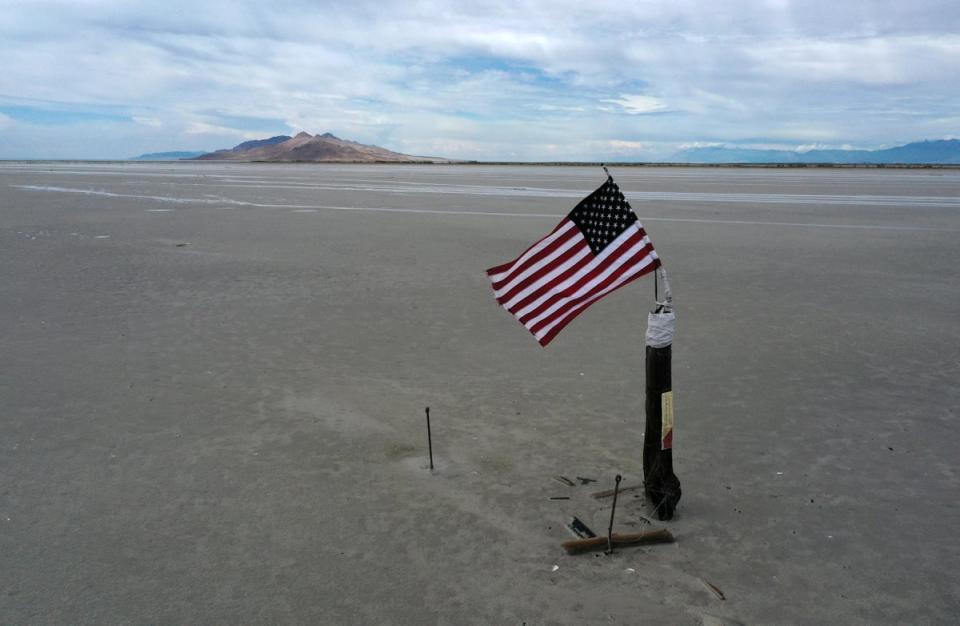
Baxter isn’t a climate scientist. Instead, her work focuses on “really tiny things” – microbial communities which form the base of the lake’s entire ecosystem. “I think about the life that lives in extreme environments and what kind of secrets can it teach us about surviving environmental damage,” she says.
Despite Great Salt Lake’s unique characteristics, and that it’s the largest saline lake in the western hemisphere, it had been overlooked for research. This meant ripe opportunities for Baxter’s undergrads, away from areas typically crowded by post-grads and PhDs. “[My students] present at international meetings because it’s a system that’s so understudied that everything we do is novel,” she says.
That work also turned Baxter into Great Salt Lake’s go-to person. “I had to suddenly become an expert on a lake system, which was not my background. I fell into that relationship with the lake lovingly, but a little from the side,” she explains.
“When I talked to people about the lake, they would say it’s a stinky place or tell me a negative story. I was having all of these amazing scientific and personal experiences, and I thought, this lake just needs attention.”
She founded the Great Salt Lake Institute in 2008 to expand scientific research and raise awareness about an ecosystem heading for collapse. The latter has involved some unusual tactics for a scientist, including in 2019, when she and a colleague, Jaimi Butler, wrote the lake’s obituary.
Great Salt Lake, and these other saline lakes in the world, are canaries in the coal mine
Dr Bonnie Baxter
“We were trying to envision what if the lake had died,” she says. “We took the perspective of a person in the future writing an obituary for a woman, what she had contributed to society, and what we missed about her.”
In a video, Baxter stands on the parched lakebed, wearing a black dress. “Great Salt Lake experienced her final glimmering sunset today, succumbing to a long struggle with chronic diversions, exacerbated by climate change,” she reads, noting that the lake “was a non-conformist” and an “entrepreneur”.
“She supported Utah’s economy for many years but we did not adequately fund her healthcare in time. Had we done so, we may not be mourning her death today,” Baxter continues.
The obituary pays tribute to the many people “who pleaded for action” but notes that “the megadrought of the southwest and climate change were not so easily overcome”.
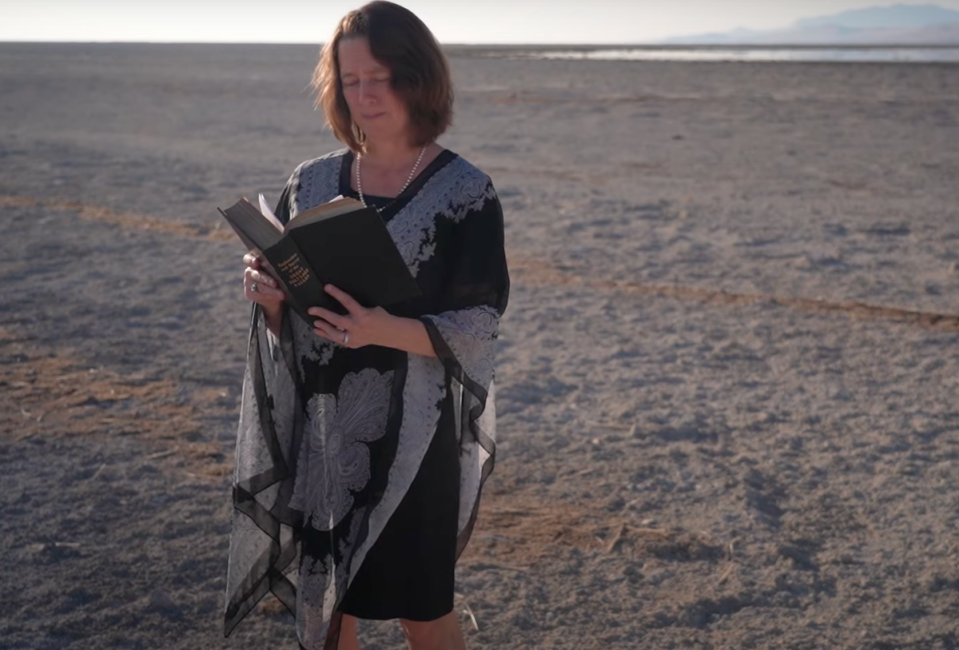
It closes: “In lieu of flowers, conserve water and call your legislators to advocate for smart water laws. In keeping with her salty personality, she requested that her admirers play the song ‘AnotherOne Bites The Dust’ at her memorial.”
Baxter says the performance left her emotional.
“I think that’s when I started to understand that Great Salt Lake, and these other saline lakes in the world, are canaries in the coal mine,” she said. “They are so dependent on water inflow and when that changes from either diversions or climate change, we’re going to see them shrink before we see changes in other systems.
“That’s when I started thinking of myself as studying climate change because that was never my intent. But when this happens to a system that you know and love, you have to start trying to clamour about that.”
‘An environmental nuclear bomb’
Great Salt Lake formed around 11,000 years ago, and Indigenous peoples came to its shores to harvest salt for generations before white settlers arrived in 1847. With the lake five times saltier than the ocean, settlers diverted water from three rivers that feed the lake. Today, 70 per cent of diversions go to agriculture, and the rest is split between industry and residential.
The shrinking of the lake is not only expected to harm wildlife populations and the economy. It is, what one Republican lawmaker told The New York Times, a “potential environmental nuclear bomb”.
Great Salt Lake is “terminal” as industrial and agricultural by-products, and naturally occurring elements in surrounding mountains, wash into its basin and don’t get flushed out.
The lakebed contains toxic chemicals – arsenic, lead and mercury – and as water recedes, the wind picks up particles from the dusty flats. Poisonous dust storms could cause severe breathing problems, and increase infant mortality and cancer rates.
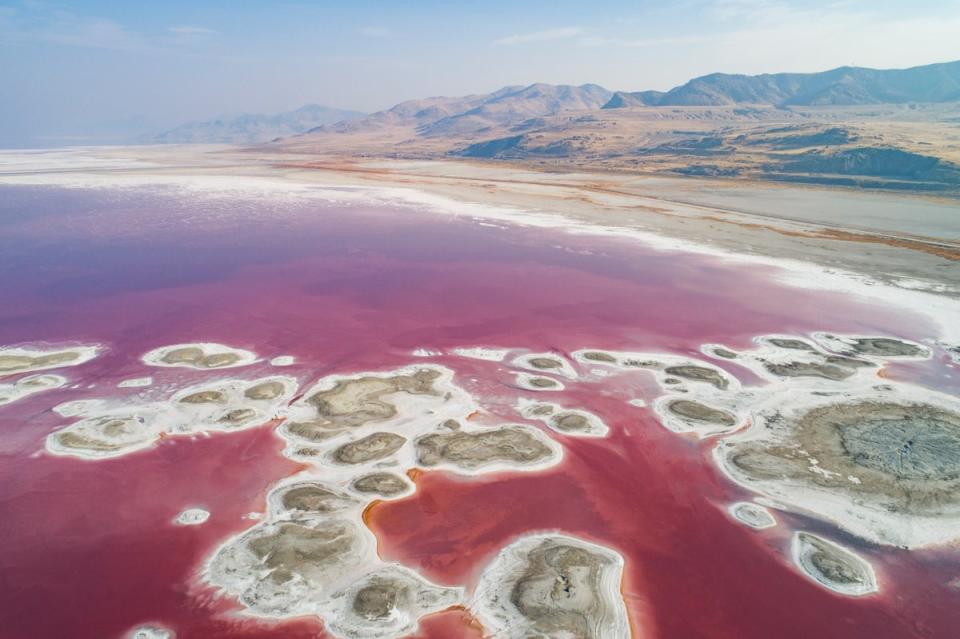
These threats are far from hypothetical: precedent exists among the Utah lake’s salty cousins.
In Iran, Lake Urmia, once the world’s sixth-largest saline lake, has all but dried up. A study last year found that Urmia’s drought significantly contributed to rising cases of hypertension in a county bordering the lake, from 2 per cent in 2012 to 19.5 per cent just seven years later.
‘We all have lungs, right?’
As the crisis at Great Salt Lake deepens, Baxter has given more and more public talks. “I strongly believe that scientists should be speaking to the public, not just in our laboratories, and that we should be telling folks what we see,” she said.
There are a dozen reasons to care about Great Salt Lake’s demise, she said, including, “We all have lungs, right? All of us need to care about that one.”
Baxter has spoken to country and rotary clubs, care homes, art galleries and in city parks. At the Chamber of Commerce, she heard concerns about how toxic dust plumes could impact real estate values, and the ability to attract companies to Utah.
At Snowbird, one of the US’s top ski resorts, people wanted to know how losing Great Salt Lake would impact weather patterns that create the region’s pristine powder, and what would happen if dust landed on the snow. The region’s ski industry supports 20,000 jobs and adds $1.2bn (£948) to the economy.
Baxter says the most enthusiastic response came from seniors at assisted-living homes.
“Everyone in that room had a positive relationship with Great Salt Lake,” she explains. “They knew about resorts on the lake in the first part of the 1900s, they had memories of floating in the lake and birdwatching out there. They had a rich knowledge but also were concerned about leaving this ecosystem devastated because they care about their grandkids.”
Even though Utah is deeply conservative, both lawmakers and everyday citizens are engaged to take action.

“The thing that is unmistakable in the West is how people are connected to the outdoors. These aren’t empty messages to people who live here.”
“I don’t think you would see this [happening] in Texas,” she adds, regarding the plans being introduced to protect the lake.
Utah’s legislature has passed 64 water bills since 2018, some with unanimous, bipartisan support. Last year, lawmakers appointed a Great Salt Lake commissioner to the governor’s cabinet, a role with the express purpose of acting in the lake’s best interests. In January, the first-ever strategic plan to get the lake back to healthy levels was published.
What that plan makes clear is there is no silver bullet to save the lake but that it will take a combination of water conservation, negotiations over water rights, and monitoring water levels to succeed.
That won’t happen without farmers, a group well aware of the perils of ignoring nature’s warning signs on such a formidable agricultural landscape. “Farmers are biologists, at the end of the day,” Baxter says. “They understand the trophic nature of the food chains and the ecosystem. Talk about people who’ve had to pay attention to climate.”
Millions of dollars are being dedicated to an “Agricultural Water Optimisation Programme” to improve efficiency and “shepherd” conserved water back to the lake.
Baxter says she hoped there would be more cooperation with neighbouring states and is urging for Indigenous representation on every committee, to lean on their ancestral knowledge of water systems in the West, “that helps us learn to value water in a different way”. But the most important factor is how quickly fixes can be rolled out.
“I just know we don’t have much time,” Baxter says.
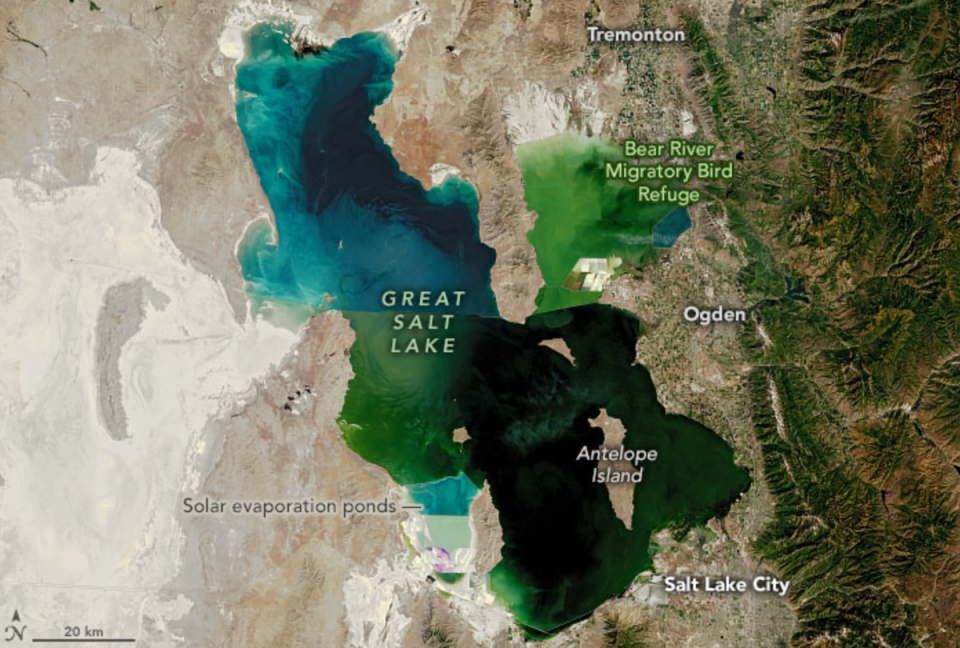
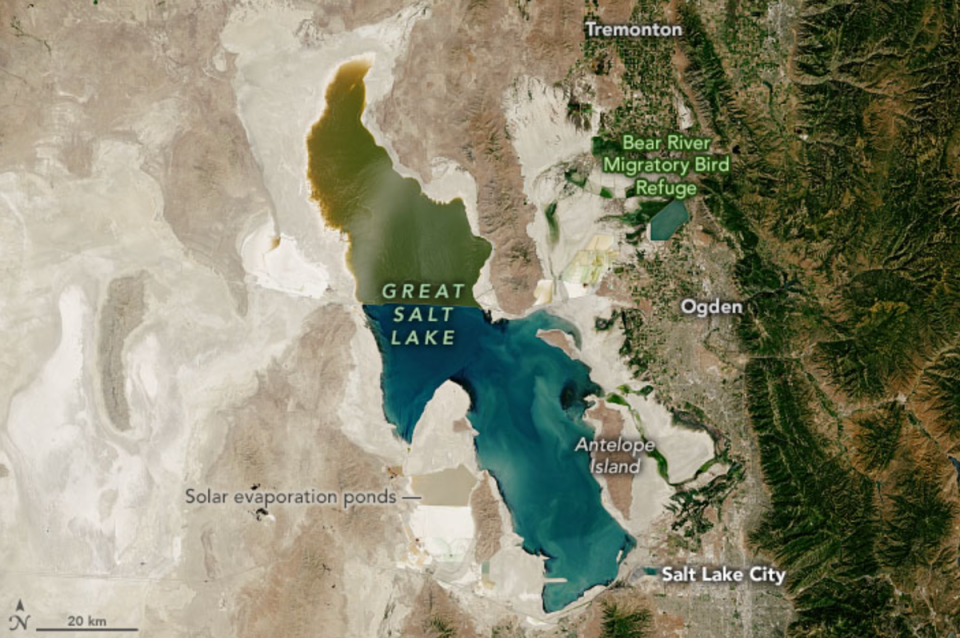
Conservation groups are pushing the state to do more. Stu Gillespie, senior attorney at Earthjustice, described Utah’s strategy to safeguard the lake as “a plan to do a plan”.
Earthjustice filed a lawsuit against the state in September on behalf of a coalition of conservation groups. The suit demands Utah fulfil its obligation to protect the lake by addressing water rights and says failure to do so is a breach of public trust.
Currently, Utah’s laws to protect Great Salt Lake do not allow “override, substitute, or modify[ing]” of water rights.
In the past, however, Utah has used the public trust doctrine in its favour, Gillespie tells The Independent. In a 1990 lawsuit, Utah cited public trust as its basis for breaching a causeway on Great Salt Lake in order to release flood waters after mineral extraction companies objected.
“In its briefing to the Utah Supreme Court, the state fully embraced the public trust. It said there was nothing that could limit that public trust principle,” Gillespie says.
In an email to The Independent, Utah governor Spencer Cox declined to comment on specifics of the recent lawsuit but said that “we invite all to work with us to find meaningful ways to benefit the lake, its ecosystem, and surrounding communities”.
“In recent years, there has been unprecedented interest, investment and action by the state of Utah, cities, towns, residents, farmers, and others throughout the state to preserve and protect the Great Salt Lake. The state has been actively working with many interested parties to take concrete actions to help the lake,” the governor says.
What appears non-negotiable among most Utah lawmakers is ambitious plans for economic growth and development.
“Pro-growth and pro-development has been the way to go out here since the 1840s, frankly,” Baxter says. Yet, she notes, these issues were the only things that the state could control “in the right timescale”.
Asked about her optimism for the future of Great Salt Lake, she pauses.
Some scientists are working within systems where “they feel like they’re banging their heads against the wall,” she says, emphasising that’s not what’s happening in Utah.
“The message is being heard and people are acting,” Baxter says. “It’s just the levers of government are slow, and there are competing interests.
“Where I have pessimism is that the climate situation is not getting better. I’m just not convinced, as a scientist, that we can work at the rate we need to, in order to solve this problem.
“But optimism comes from the fact that so many people have been convinced that this is a battle worth fighting.”
The climate crisis has ushered in a new normaI with both immediate impacts – in the chaotic aftermath of extreme weather events and disasters – and fallout that is harder to predict long term. In a new series, ‘Global Warning’, The Independent is interviewing people fighting on the front lines of climate change across the country


